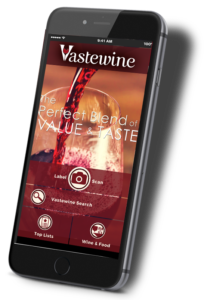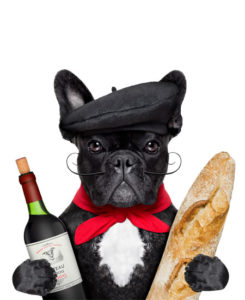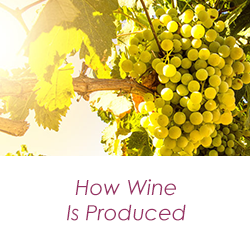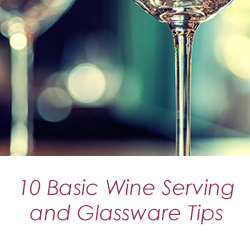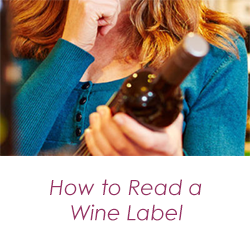Top 12 Wine Basics You Need to Know
– Man, That Pinot Has Some Nice Legs!
Are You Taste Tested?
Tonight’s the night! It’s your first ever wine tasting at a local restaurant. There are a lot of people you know who are going, so you need to know your stuff. Luckily, you’ve been studying and trying some wines at home, so you at least have a basic understanding of what’s going on. However, there are conversations to be had tonight, and you need to be prepared with some basic knowledge and terms. If someone starts talking about “legs”, that’s not the time to start scouring the room looking at everyone in there trying to figure out who it is they are referring to. They are more than likely talking about the wine. Unless, of course, it’s that loud mouth guy at your office. Then you can assume it’s not vino related.
Now, let’s get you ready for those seemingly awkward conversations. After this, you will be ready for the wine tasting. Enjoy!
1. Wine Expiration
Oh, you are going to hear a lot of conversation about this one, and the answers are probably going to vary quite a bit. First, with any wine, you need to refrigerate it the night after opening it. Also, it’s best to insert the original cork or at least a really tight wine stopper. For red wines, they can last up to 2 weeks in some instances and are best if taken out of the refrigerator a couple hours before serving again. White wines, on the other hand, usually will last only up to 3 days. Old and flat wines are not tasty. Trust me, I’ve had my share of desperate attempts when I was out of bottles and the store was already closed.
2. Tannins
Ok, let’s just get this out of the way first. No, tannins is not a fancy word for tanning bed hotels. Tannins, also known as polyphenols, are compounds released from the grape stems, skins, and seeds that produce dryness. You know how when you drink Cabernet Sauvignon your mouth starts to feel dry?
That is the tannins going to work. You can actually tell, by the dryness inside your mouth, if the wine is high or low in tannins. A wine high in tannins is referred to as “tannic.” I wouldn’t recommend ordering a gin and tannic, unless you are just curious to see what they bring you. Tannins. Sorry, I just felt like typing tannins one more time in the tannins section.
3. Legs
Seriously, you’re going to need to calm down. For the last time, legs are referring to the wine, ok? The “legs” of a wine are not indicators of how good the wine is, but they will give you a good idea of how much alcohol content your glass contains. Simply swirl the wine in the glass for a second and notice the little droplets flowing down the sides. The higher density of the droplets, the higher alcohol content of the wine. Just make sure you know the context of the conversation you are entering before complimenting legs.
4. Grapes
Oh, so you have found yourself stuck in a deep conversation about wine and it’s getting way too technical? You need to get out of that one and move across the room? Don’t worry. I’ll help you out. Just interrupt whoever is talking and tell them this. “Hey, fun wine fact for you. Did you know grapes are really just shrunken watermelons?” That should work. Oh, and you’re welcome.
5. The Wine Glass
You ever wonder why different wines are served in different wine glasses? You thought it was just for looks, didn’t you? Well, believe it or not, the wine glass will actually make wines taste different! When tasting wine, smell plays a crucial part in the overall experience. So, different sized glasses will produce different smells. For example, white floral wines will typically be more vibrant when the rim of the glass is smaller, allowing your nose to contain those aromas in a tighter space. Many reds, on the other hand, need to breath a bit more so larger bowls are required. Does this mean you need to go out and buy every shape wine glass in the world to be ready? No. Try out some different glasses here and there until you find what works best for you.
6. Body
First the legs, now I’m talking about the whole body? What kind of wine party is this? Get your mind out of the gutter. Still talking about the wines here. I’m sure you have heard the terms “Full bodied” and “light bodied” when talking about wine. In general, most white wines are considered light bodied. Red wines are usually referred to as medium or full bodied. But what does this actually mean? Once again, it comes down to alcohol content. If the wine has an alcohol content above 13.5%, it is considered full bodied. 12.5% to 13.5% are considered medium bodied, and below 12.5%? You guessed it. Light bodied. Wow! You are getting good at this!
7. Arms
So, we’ve covered the legs and the body, what about the arms? The arm of a wine is the part that you use to hold it up to your mouth.
8. How To Hold The Glass
You know how you hold a beer can at a barn party? Well, don’t do that at the wine tasting. Depending on the type of wine you are drinking, you want to look like you know what you are doing, and also it will make a difference on how it tastes! How, you ask? Well, if you are drinking a white wine, you want to hold the stem of the glass. If you hold the bowl, your hands will warm up the wine and alter the taste. If you are drinking a red wine, it is ok to hold the bowl or the stem. By the way, you don’t have to do anything fancy with your pinky finger. Just in case you watch a lot of movies.
9. Dryness
If you hear someone mention that a wine is “dry”, don’t run over there and start yelling about tannins from section 2. It’s not the same thing as the tannins making your mouth feel dry. It simply means that the wine has no residual sugar in it. You could also hear similar descriptions such as semi dry and sweet. It really just depends on how long the fermentation process lasted at the winery.
10. Tight Pants
Let’s assume that your story about the grapes being shrunken watermelons didn’t work, and you’ve now found yourself deeper in conversation about the history of fruit. Don’t fret. Just change the direction of the conversation by saying “Hey, I heard that wearing tighter pants while wine tasting can make the wines taste different! What do you guys think?” If that doesn’t work, and you find yourself talking for 2 hours about skinny pants, then I’m sorry. I tried.
11. Finish
What does it mean when someone says the wine has a finish? Watch this video to learn all about it.
12. Breathe
Last but not least you have to let the wine breathe. It actually makes a huge difference, watch this video to find out how.
So there you have it. 10 need to know (well, most of them) facts about wine to hit the tasting tonight. Time to start talking about legs, arms, and bodies.
Just remember, wine is meant to be fun, so enjoy every sip, every bottle.
Sign Up to be a Tasting Partner!
Enter your email below and you will be the first to know about new wines, recipes, wine articles, and new additions to the Vastewine app.
